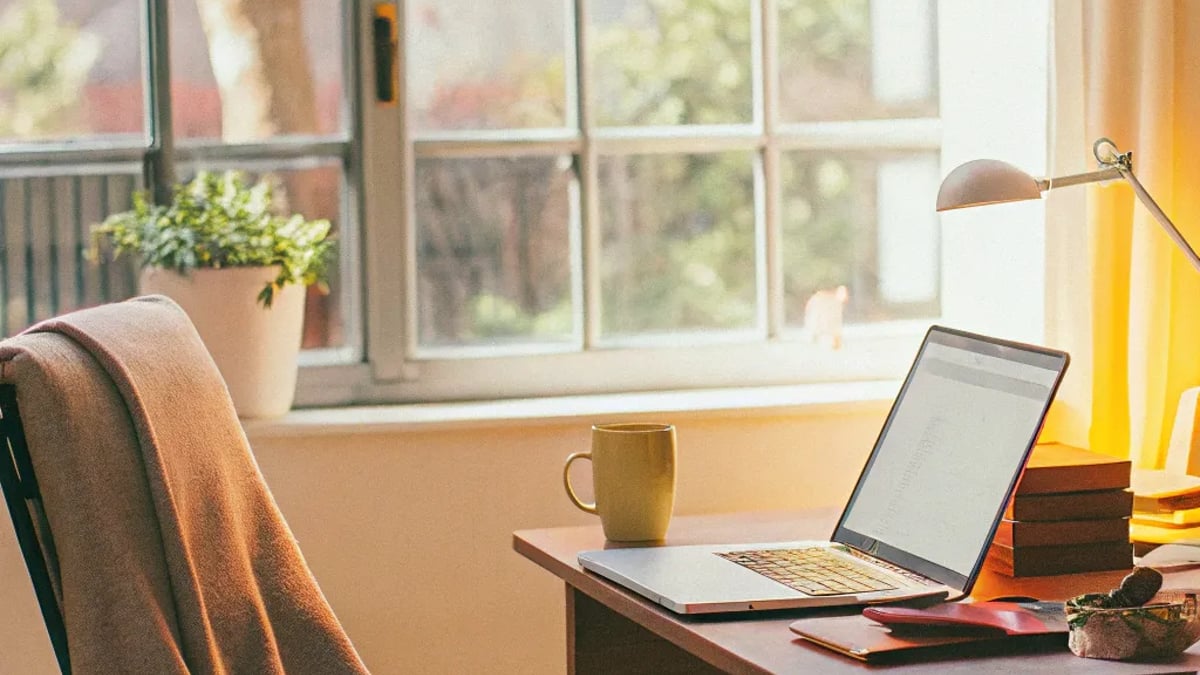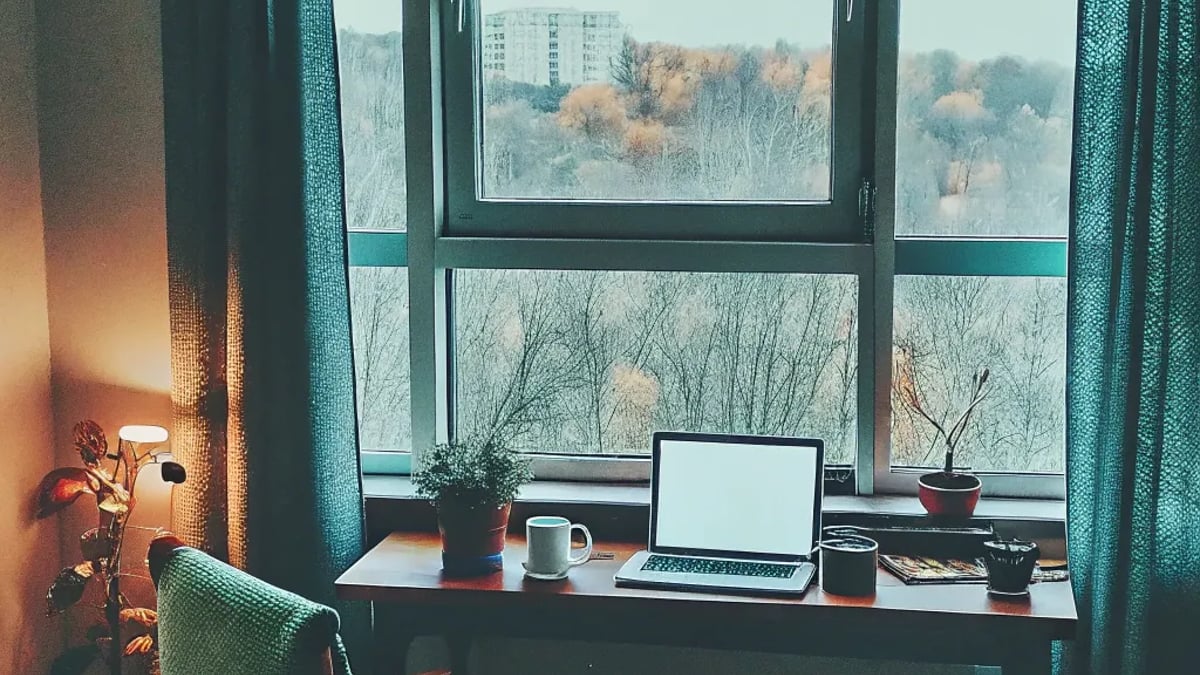
Creating a productive workspace while traveling isn't just a luxury anymore—it's becoming essential for many professionals. Whether you're taking a workation, extending a business trip, or living the digital nomad lifestyle, knowing how to transform a temporary lodging into an efficient office can make all the difference in your productivity and comfort.
Finding the Right Accommodation for Remote Work
Before you even pack your laptop, selecting the right place to stay is crucial. Not all accommodations are created equal when it comes to supporting remote work.
What to Look for in Listings
When browsing through Airbnb or hotel options, pay special attention to amenities that will support your work needs. According to many remote workers on Reddit, the availability of a proper desk is surprisingly uncommon in many vacation rentals.

"Now that I work remotely, I find it challenging to locate Airbnbs with proper workstations," noted one Reddit user in a popular thread about remote working setups. This sentiment is echoed by many digital nomads who find themselves working from beds or kitchen counters.
Look specifically for:
- Listings that mention "laptop-friendly workspace" or "desk/workspace"
- Photos showing a proper desk and chair
- Fast, reliable WiFi (check reviews for comments about internet speed)
- Adequate power outlets near seating areas
- Natural lighting near potential work areas
Don't hesitate to message hosts directly about your specific needs. Many Airbnb hosts are willing to accommodate reasonable requests, especially for longer stays. Some hosts even mention having "folding tables in case someone wants to set up a larger workspace" or extra lamps available upon request.
Essential Equipment to Pack
Even with the perfect accommodation, bringing a few key items can transform an adequate space into an ergonomic dream.

Portable Work Essentials
My last trip to Chicago taught me the importance of having the right gear. I had booked what looked like a perfect Airbnb, only to find the "desk" was a tiny decorative table barely large enough for my coffee cup, let alone my laptop.
Here's what I now consider essential for my mobile office:
- Laptop stand or portable riser (collapsible ones take minimal space)
- Wireless keyboard and mouse
- Noise-canceling headphones
- Multi-port USB adapter
- Portable second monitor (if you regularly use dual screens)
- Extension cord or travel power strip
- Proper lighting (small clip-on lamp or portable ring light)
The portable second monitor has been a game-changer for me. While not everyone needs dual screens, if you're accustomed to working with multiple monitors at home, the productivity hit from downsizing to just your laptop screen can be significant.
Setting Up Your Temporary Workspace
Once you've arrived at your accommodation, it's time to transform that corner of the room into a functional office.
Optimizing Available Space
I've found that the first 30 minutes after arriving are crucial for establishing a good setup. Last Tuesday when I checked into my hotel in Seattle, I immediately rearranged the furniture before even unpacking my suitcase.
Start by:
- Identifying the best location based on natural light, power outlets, and comfort
- Moving unnecessary furniture aside if possible
- Positioning your chair and workspace to minimize glare on your screen
- Setting up near a window for natural light, but not directly facing it
If the accommodation doesn't have a suitable desk, get creative. I've successfully used:
- Dining tables (adjust chair height with pillows if needed)
- Kitchen counters (for standing desk sessions)
- Dressers (for shorter work periods)
- Ironing boards (in desperate situations—not ideal but adjustable height!)
Ergonomics Matter
Don't sacrifice your physical wellbeing for convenience. Improper ergonomics for even a few days can lead to discomfort or injury.
Aim for:
- Screen at eye level (use your laptop stand or stack books underneath)
- Feet flat on floor with knees at roughly 90-degree angle
- Arms at approximately 90 degrees when typing
- Back supported against chair
What About Internet Connectivity?
Even the most perfect physical setup is useless without reliable internet. This is often the most challenging aspect of remote work while traveling.
Ensuring Reliable Connectivity
While most accommodations advertise WiFi, the quality varies dramatically. Here's how to prepare:
- Always have a backup internet option (mobile hotspot)
- Test the WiFi speed immediately upon arrival
- Identify nearby cafes or coworking spaces as backup options
- Consider a travel router to improve weak signals
- Schedule bandwidth-intensive tasks (video calls, large file transfers) during off-peak hours
I once had to conduct an important client presentation from a hotel in Miami with unexpectedly spotty WiFi. Having my phone's hotspot ready to go saved the meeting—though it did cost me in data charges!
How Do You Handle Video Calls in Temporary Spaces?
Video calls present unique challenges in temporary accommodations. Background noise, poor lighting, and unprofessional backgrounds can all undermine your professional image.
Creating a Professional Video Call Environment
Before your first call:
- Identify the quietest area with the best lighting
- Check what appears in your background (tidy up or rearrange as needed)
- Test the lighting—natural light from the front is best, avoid backlighting
- Have headphones ready to minimize echo and background noise
- Close windows if outside noise is an issue
If the space simply doesn't work for video calls, consider:
- Using virtual backgrounds (with good green screen techniques)
- Booking a meeting room in the hotel's business center
- Finding a nearby coworking space or quiet café
- Scheduling calls during quieter hours if in a noisy location
Maintaining Work-Life Balance in Temporary Spaces
When your bed is just steps away from your "office," maintaining boundaries becomes crucial for both productivity and relaxation.
Creating Mental and Physical Boundaries
Establish clear routines:
- Set up and break down your workstation at consistent times
- Take regular breaks to explore your surroundings
- Change your physical position throughout the day
- Leave your accommodation during lunch if possible
I find that packing away my work equipment at the end of each day helps signal to my brain that work time is over, even in a studio apartment or hotel room where the physical separation isn't possible.
Common Challenges and Solutions
Based on experiences shared across Reddit threads and my own travels, these challenges come up frequently:
Problem: No Proper Chair
Solution: Request one from the host/hotel, use pillows for lumbar support, or alternate between sitting and standing positions throughout the day.
Problem: Limited Power Outlets
Solution: Pack a small power strip or extension cord to create your own power hub.
Problem: Poor Lighting
Solution: Position yourself near windows during daylight hours, pack a small portable lamp, or use a ring light for video calls.
Problem: Distracting Environments
Solution: Noise-canceling headphones, white noise apps, and clear communication with travel companions about your work needs.
Making Special Requests to Hosts
Don't be afraid to ask for what you need. Many Airbnb hosts are eager to accommodate reasonable requests, especially for longer stays.
One Reddit user shared: "We have multiple folding tables in case someone wants to set up a larger workspace in the dining room, plus extra lamps and a rolling chair." This kind of flexibility is common among hosts who understand the growing remote work trend.
When making requests:
- Be specific about what you need
- Ask well in advance of your stay
- Offer to pay a reasonable additional fee if appropriate
- Express appreciation for any accommodations made
The travel and accommodation industry is increasingly recognizing the needs of remote workers. By planning ahead, packing strategically, and optimizing your temporary space, you can maintain productivity and comfort while enjoying the benefits of working from anywhere.
Remember that perfection isn't the goal—functionality is. With some creativity and flexibility, almost any space can become a workable office for a short period. Your back, eyes, and stress levels will thank you for the effort you put into creating a proper remote workstation, no matter where your travels take you.
Tags

About Eliot Greenwood the Author
Eliot Greenwood, an avid traveler and environmental advocate, has spent over a decade exploring the world while promoting eco-friendly tourism. He specializes in guiding travelers on how to minimize their carbon footprint and engage with local communities sustainably.
Recommended Articles
Retirement Planning Essentials Every American Should Know
Learn essential retirement planning tips for a secure financial future, including types of plans and savings strategies every American should know.
Medicare Drug List Updates for 2026 Are Out
Discover the key Medicare drug coverage updates for 2026, including cost caps and price negotiation programs for better healthcare options.
Which iPhone Color Fits Your Style Best
In 2025, Apple tantalizes with its latest iPhone colors, each more chic and expressive than the last—think deep Titanium Blue, vibrant Product RED, and sophisticated Desert Sand. Whether your style leans toward muted sophistication, bold statements, or earthy tones, this guide reveals how your iPhone hue can harmonize with your wardrobe and lifestyle, elevating your personal tech as both a tool and statement piece. Dive in to discover which shade will perfectly reflect your personality and make you eager to flaunt your device.
Why More Adults Are Switching to Safety Footwear
In recent years, safety footwear has transcended its construction site origins, becoming a fashionable and practical choice for adults across various demographics seeking both comfort and protection in their daily wardrobes. With sleek designs, versatile features like non-slip soles and breathable materials, and a growing awareness of foot health, these modern safety shoes are not only reducing fall risks but also proving that style and functionality can go hand in hand. Discover how these shoes are revolutionizing everyday fashion and why more people are making the switch.
See the New iPhone Colors Everyone’s Talking About
Unveiling the dazzling iPhone 2025 color lineup, Apple has stunned audiences with striking hues like deep emerald, Alpine Blue, and Desert Titanium, making waves among tech enthusiasts and setting a new benchmark for smartphone aesthetics. Discover how these colors not only enhance the iPhone's premium feel but also influence its resale value, offering a fresh perspective on choosing the perfect shade for your next device.




